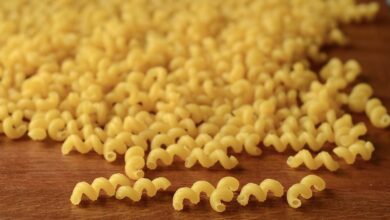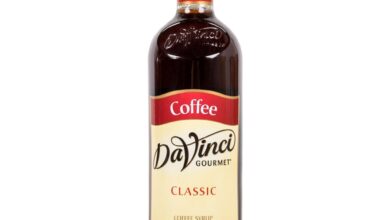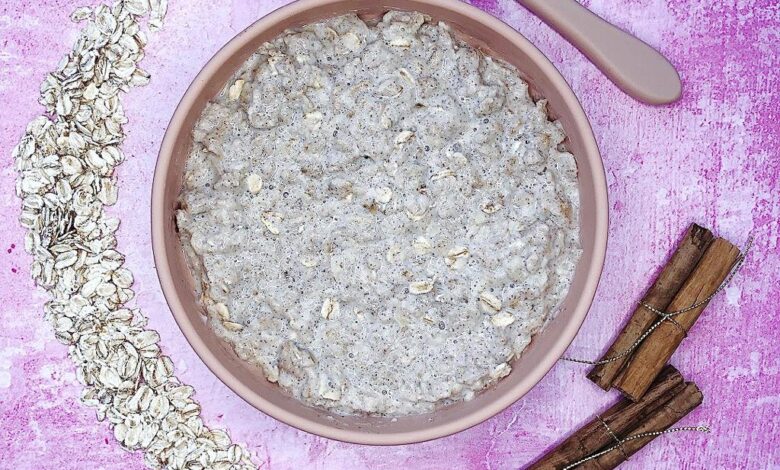
Millet Porridge with Cinnamon Cranberry Apples: A Delicious and Healthy Breakfast
Millet porridge with cinnamon cranberry apples is a breakfast bowl that’s both delicious and nutritious. This simple yet satisfying dish is packed with fiber, protein, and essential vitamins and minerals, making it a perfect way to start your day. The nutty flavor of millet pairs beautifully with the warm spices of cinnamon and the sweet-tart notes of cranberries and apples, creating a flavor combination that is both comforting and refreshing.
Whether you prefer a creamy porridge or a slightly more textured one, this recipe is easily customizable to suit your taste.
Beyond its taste, millet porridge with cinnamon cranberry apples offers a host of health benefits. Millet is a gluten-free grain that is rich in fiber, which aids digestion and helps you feel full longer. Cinnamon is known for its anti-inflammatory properties and can help regulate blood sugar levels.
Cranberries are a good source of antioxidants and may help prevent urinary tract infections. Apples, on the other hand, are rich in fiber and vitamin C, contributing to overall health and well-being.
Millet Porridge with Cinnamon Cranberry Apples: A Nutritious and Flavorful Breakfast
Millet porridge is a hearty and wholesome breakfast option that can provide you with a sustained energy boost throughout the morning. This ancient grain is packed with nutrients and offers a delightful flavor profile when combined with cinnamon, cranberries, and apples.
Nutritional Benefits of Millet
Millet is a nutrient-rich grain that offers a wide range of health benefits. It is a good source of:
- Fiber:Millet is high in fiber, which aids digestion and promotes a feeling of fullness.
- Magnesium:This mineral is essential for muscle function, blood sugar control, and bone health.
- Iron:Millet is a good source of iron, which is vital for red blood cell production and oxygen transport.
- Antioxidants:Millet contains antioxidants that protect cells from damage caused by free radicals.
Flavor Profile of Cinnamon, Cranberry, and Apples
The combination of cinnamon, cranberry, and apples creates a warm and comforting flavor profile that is both sweet and tart.
Millet porridge with cinnamon cranberry apples is a comforting breakfast that’s both nourishing and flavorful. I love how the sweet and tart cranberries complement the earthy millet, and the cinnamon adds a warm, spicy touch. For a seasonal twist, I often pair this porridge with a side of pumpkin spice latte, or check out 8 rd approved pumpkin flavored snacks to buy at trader joes for some extra fall-inspired flavor.
Speaking of pumpkin, I’m also experimenting with adding a touch of pumpkin puree to my millet porridge, which adds a subtle sweetness and creaminess.
- Cinnamon:This spice adds a warm and aromatic flavor to the porridge, and it is also known for its anti-inflammatory properties.
- Cranberry:Cranberries provide a tart and tangy flavor that balances the sweetness of the apples and the warmth of the cinnamon. They are also a good source of vitamin C and antioxidants.
- Apples:Apples add a natural sweetness and a satisfying texture to the porridge. They are also a good source of fiber and vitamin C.
Recipe Variations
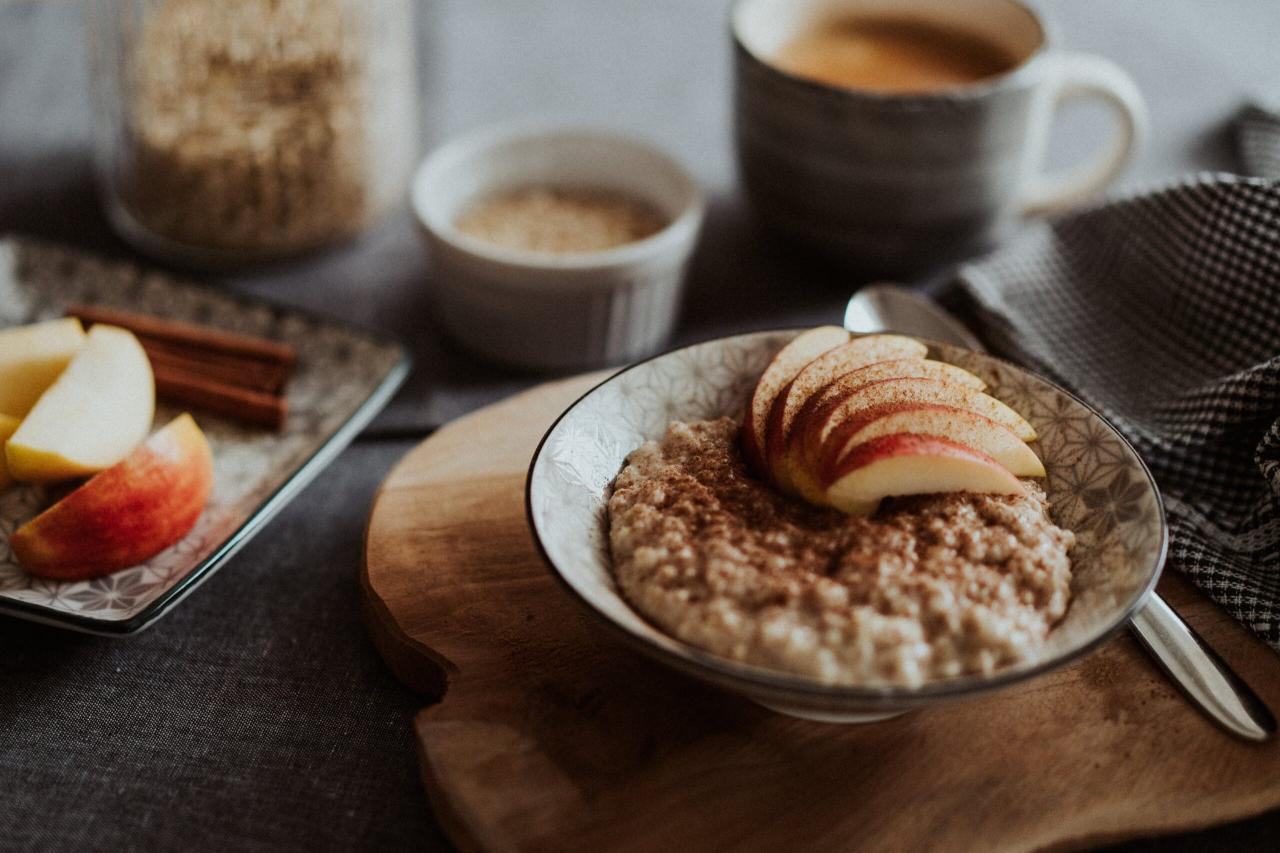
This millet porridge recipe is incredibly versatile, offering various ways to customize it to your taste and dietary needs. Experiment with different millet types, sweeteners, and cooking methods to discover your perfect porridge bowl.
Millet Types and Texture
The type of millet used can significantly impact the porridge’s texture.
- Pearl millet, the most common type, has a slightly nutty flavor and cooks up with a creamy texture.
- Finger millet, also known as ragi, has a slightly earthy flavor and a chewier texture.
- Foxtail millet, with a delicate flavor, cooks up with a slightly fluffy texture.
Alternative Sweeteners
For those avoiding refined sugar, there are several natural sweeteners that can enhance the flavor of your millet porridge.
- Maple syrupprovides a rich, caramel-like sweetness.
- Honeyoffers a unique floral sweetness with a hint of bitterness.
- Agave nectarhas a mild sweetness and a smooth texture.
Cooking Methods
This recipe can be adapted to various cooking methods, offering flexibility for your kitchen setup and time constraints.
Millet porridge with cinnamon cranberry apples is a delicious and nutritious breakfast option. It’s packed with fiber, which keeps you feeling full and satisfied, helping you avoid those “I’m starving” moments that can lead to unhealthy choices. Remember, though, that even when making healthy choices, it’s important to be mindful of your mindset and avoid falling into the thinking traps to avoid when trying to lose weight.
With a positive attitude and a focus on sustainable changes, you can enjoy your millet porridge and feel confident in your journey towards your weight goals.
- Stovetop: This is the traditional method, allowing for precise control over the cooking process.
- Slow cooker: For a hands-off approach, slow cooking allows the millet to absorb the liquid slowly, resulting in a creamy texture.
- Instant Pot: This method offers the fastest cooking time, perfect for busy mornings.
Serving Suggestions
This millet porridge with cinnamon cranberry apples is a versatile breakfast option that can be enjoyed in various ways. Whether you prefer a simple and wholesome meal or a more elaborate and flavorful experience, there are numerous ways to customize this dish to your liking.
Toppings for Millet Porridge, Millet porridge with cinnamon cranberry apples
Toppings can add texture, flavor, and nutritional value to your millet porridge. Here is a table showcasing various topping options, categorized by their type:
| Type | Examples |
|---|---|
| Nuts | Almonds, walnuts, pecans, hazelnuts, cashews |
| Seeds | Chia seeds, flax seeds, sunflower seeds, pumpkin seeds |
| Berries | Blueberries, raspberries, strawberries, blackberries |
| Fruits | Bananas, mangoes, peaches, pears |
| Other | Coconut flakes, shredded cheese, chopped dates, dried fruit |
Flavor Combinations
The cinnamon cranberry apples add a sweet and tangy flavor to the millet porridge. You can further enhance the flavor profile by incorporating contrasting elements. Here is a table showcasing different flavor combinations:
| Flavor | Examples |
|---|---|
| Sweet and Savory | Toasted pecans, a drizzle of maple syrup, and a pinch of salt |
| Tropical | Mango slices, toasted coconut flakes, and a sprinkle of lime zest |
| Citrusy | Orange segments, a sprinkle of orange zest, and a drizzle of honey |
| Nutty and Fruity | Sliced almonds, dried cranberries, and a dollop of yogurt |
Portion Control and Balanced Diet
While millet porridge with cinnamon cranberry apples is a nutritious and satisfying breakfast option, it’s essential to practice portion control. A balanced diet includes a variety of foods from all food groups, ensuring you receive all the necessary nutrients. This porridge can be a part of a balanced breakfast, providing you with energy and fiber.
Health Benefits
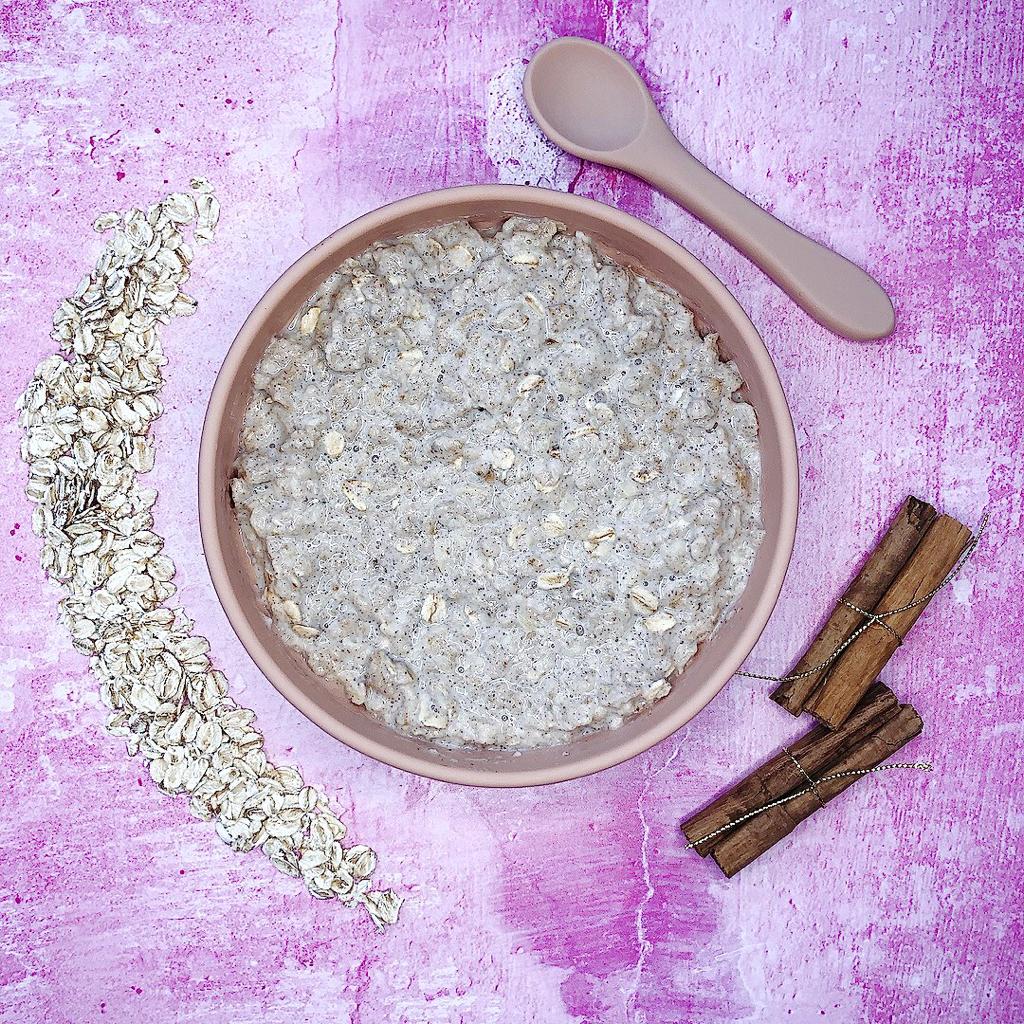
This millet porridge is not only delicious but also packed with nutrients that contribute to overall well-being. Let’s explore the health benefits of each ingredient and how they work together to create a nutritious and wholesome breakfast.
Nutritional Value of Ingredients
Each ingredient in this porridge contributes unique nutrients to the meal.
- Millet: A good source of fiber, magnesium, and iron. It is also a gluten-free grain, making it suitable for individuals with gluten sensitivity. Fiber promotes digestive health and helps regulate blood sugar levels. Magnesium supports muscle function and nerve health, while iron is essential for oxygen transport throughout the body.
- Cinnamon: This spice is known for its anti-inflammatory properties and its ability to help regulate blood sugar levels. Cinnamon can also help lower cholesterol levels and improve insulin sensitivity.
- Cranberries: These berries are rich in antioxidants, which help protect cells from damage caused by free radicals. Cranberries are also a good source of vitamin C, which supports immune function.
- Apple: A good source of fiber, vitamin C, and potassium. Apples also contain pectin, a type of soluble fiber that can help lower cholesterol levels.
Benefits for Gut Microbiome
The fiber content in millet, cranberries, and apples provides nourishment for the beneficial bacteria in your gut. These bacteria play a crucial role in digestion, immune function, and overall health. A healthy gut microbiome is associated with improved digestion, reduced inflammation, and a stronger immune system.
Benefits for Blood Sugar Regulation
The combination of fiber and cinnamon in this porridge can help regulate blood sugar levels. Fiber slows down the absorption of sugar into the bloodstream, preventing spikes and crashes. Cinnamon has been shown to improve insulin sensitivity, which helps the body use glucose more effectively.
Benefits for Heart Health
The soluble fiber in apples and cranberries can help lower cholesterol levels, which is beneficial for heart health. Cinnamon can also help reduce LDL (“bad”) cholesterol and improve HDL (“good”) cholesterol levels. Additionally, potassium from apples supports healthy blood pressure.
Millet porridge with cinnamon cranberry apples is a simple, comforting breakfast that warms you from the inside out. I find that a good stretch after enjoying a bowl can really help to wake up my body and mind, and I’ve found some great tips on ways to learn to love stretching that have made a real difference for me.
After a good stretch, I’m ready to tackle the day, feeling energized and refreshed. And what better way to start the day than with a bowl of millet porridge with cinnamon cranberry apples? It’s a delicious and nutritious way to fuel your body and mind.
Cultural Significance
Millet porridge, a humble yet versatile dish, has a rich history woven into the fabric of various cultures worldwide. From ancient times to the present day, millet has been a staple food, providing sustenance and nourishing generations. Its journey through time and across continents reveals fascinating insights into culinary traditions and the importance of this grain in human history.
Millet Porridge in Different Cultures
Millet porridge has been a cherished food in numerous cultures for centuries. Its origins can be traced back to ancient civilizations, where it was a primary source of nutrition.
- Africa:In many African countries, millet porridge, often referred to as “fufu” or “uji,” is a staple food, particularly in regions with arid climates. It is typically prepared with water or milk and served with various toppings, such as beans, vegetables, or meat.
- Asia:Millet porridge is a common breakfast dish in several Asian countries, including India, China, and Japan. In India, it is known as “bajra,” and it is often cooked with spices like turmeric and ginger. In China, millet porridge is a popular winter food, often served with sweet toppings like dates or sesame seeds.
- Europe:While millet porridge is less common in Europe compared to other regions, it was historically consumed in some countries, particularly in Eastern Europe. In Poland, for example, millet porridge was a traditional dish, often served with butter and honey.
- Americas:In the Americas, millet porridge was a staple food for indigenous communities, particularly in North America. The grain was cultivated and used in various forms, including porridge, bread, and soups.
Cinnamon, Cranberries, and Apples in Traditional Recipes
The addition of cinnamon, cranberries, and apples to millet porridge is a delightful fusion of flavors that reflects the ingenuity of culinary traditions. These ingredients have been used in traditional recipes for centuries, adding both flavor and nutritional value.
- Cinnamon:Cinnamon, a spice derived from the bark of a cinnamon tree, has been used in culinary and medicinal practices for thousands of years. In ancient Egypt, it was highly valued and used in religious ceremonies. Its warm and aromatic flavor complements millet porridge beautifully, adding a touch of sweetness and complexity.
- Cranberries:Cranberries, tart berries native to North America, have a long history of use in traditional medicine and cuisine. Native Americans used them to treat various ailments, and early European settlers incorporated them into their diets. The tangy flavor of cranberries provides a refreshing contrast to the creamy texture of millet porridge.
- Apples:Apples, a versatile fruit cultivated worldwide, have been a staple food for centuries. They are rich in vitamins, minerals, and fiber, and their sweet and slightly tart flavor adds a delightful dimension to millet porridge. In many cultures, apples are associated with health, prosperity, and good fortune.
Cultural Variations in Preparation and Serving
The preparation and serving of millet porridge can vary significantly depending on the cultural context.
- Consistency:Some cultures prefer a thick and creamy porridge, while others prefer a thinner, more liquid consistency.
- Sweetness:The level of sweetness in millet porridge can also vary, with some cultures adding honey, sugar, or other sweeteners.
- Toppings:The toppings used on millet porridge are diverse and reflect regional culinary traditions. In some cultures, nuts, seeds, or dried fruits are common toppings, while in others, savory ingredients like beans, vegetables, or meat are preferred.
Cooking Tips
Millet porridge with cinnamon cranberry apples is a delightful and nourishing breakfast option. However, getting the perfect consistency and flavor requires some attention to detail. Here are some cooking tips to ensure your porridge is a culinary success.
Cooking Time and Ratios
The ideal cooking time for millet porridge is between 15 to 20 minutes. The exact time may vary depending on the type of millet used and the desired consistency. Generally, a 1:3 ratio of millet to liquid is a good starting point.
For example, use 1 cup of millet and 3 cups of liquid (water, milk, or a combination).
Achieving a Creamy Texture
To achieve a creamy texture, it is essential to cook the millet properly. The key is to ensure the millet is fully cooked and absorbs the liquid, creating a smooth and creamy consistency.
Tips for a Creamy Texture
- Use a good quality millet:Fresh, high-quality millet will cook more evenly and result in a creamier porridge.
- Rinse the millet:Rinsing the millet before cooking removes any excess starch, which can contribute to a sticky texture.
- Use enough liquid:Ensure you use enough liquid to cook the millet properly. The millet should be fully submerged in the liquid.
- Cook over low heat:Cooking over low heat allows the millet to cook evenly and absorb the liquid without scorching.
- Stir regularly:Stirring the millet regularly prevents sticking and ensures even cooking.
- Add additional liquid if needed:If the porridge seems too thick, add a little more liquid while cooking.
- Simmer for a few minutes after the millet is cooked:Simmering the porridge for a few minutes after the millet is cooked allows the flavors to meld and the texture to become creamier.
Preventing the Porridge from Sticking
Sticking is a common issue when cooking millet porridge. However, with the right techniques, you can prevent this.
Tips to Prevent Sticking
- Use a non-stick pot:A non-stick pot will reduce the chances of the porridge sticking to the bottom.
- Stir regularly:Regular stirring is crucial to prevent the porridge from sticking to the bottom of the pot.
- Use a little butter or oil:Adding a small amount of butter or oil to the pot before adding the millet can help prevent sticking.
Using Fresh, High-Quality Ingredients
Using fresh, high-quality ingredients is essential for making a delicious and nutritious millet porridge. Fresh millet will have a better flavor and texture, while fresh fruits and spices will add a burst of flavor and aroma.
Storage and Leftovers: Millet Porridge With Cinnamon Cranberry Apples
Millet porridge, especially with the delicious additions of cinnamon, cranberries, and apples, is a breakfast that can be enjoyed for days. It’s a great option for meal prepping and can be easily stored and reheated. Here are some tips for making the most of your leftover millet porridge.
Storing Leftover Porridge
Leftover millet porridge can be stored in the refrigerator for up to 3-4 days. It’s best to store it in an airtight container to prevent it from drying out or absorbing flavors from other foods in the refrigerator.
Reheating Porridge
Reheating millet porridge is simple. You can reheat it in a microwave-safe bowl for about 30 seconds to a minute, or on the stovetop in a saucepan over low heat, stirring occasionally until warmed through. If the porridge becomes too thick during reheating, add a splash of milk or water to adjust the consistency.
Using Leftover Porridge in Other Recipes
Leftover millet porridge can be a versatile ingredient in a variety of recipes.
Pancakes
Millet porridge adds a unique texture and flavor to pancakes. Simply add a cup of cooked millet porridge to your favorite pancake batter and cook as usual. The porridge will add a subtle sweetness and a bit of a chewy texture.
Muffins
Millet porridge can be incorporated into muffins for a nutritious and flavorful treat. Mix a cup of cooked millet porridge into your muffin batter, and bake as directed. The porridge will add a subtle sweetness and a bit of a chewy texture to the muffins.
Other Recipes
Millet porridge can also be used in other recipes such as:
- Energy Balls: Add cooked millet porridge to your energy ball recipe for a boost of fiber and protein.
- Breakfast Bowls: Use leftover millet porridge as a base for a breakfast bowl with toppings like fruit, nuts, and seeds.
- Soup Thickener: Millet porridge can be used to thicken soups and stews.
Freezing Porridge
Freezing millet porridge is possible, but it can affect the texture. The millet may become slightly mushy after freezing and thawing. If you plan to freeze your porridge, it’s best to freeze it in individual portions to make reheating easier.
To freeze, pour the cooked porridge into freezer-safe containers or bags, leaving some space at the top for expansion. When ready to use, thaw the porridge in the refrigerator overnight and reheat as desired.
Last Word
So, next time you’re looking for a wholesome and flavorful breakfast option, consider whipping up a batch of millet porridge with cinnamon cranberry apples. This versatile dish can be customized to your liking, making it a perfect choice for any morning.
Enjoy the delicious flavors and reap the nutritional benefits of this hearty and satisfying breakfast bowl.

